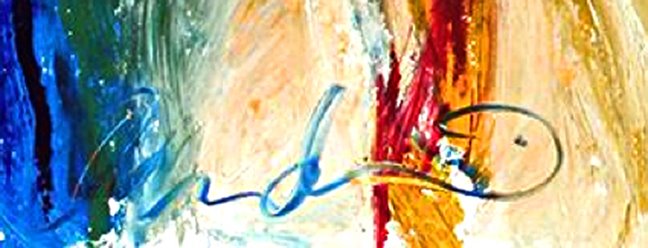


I’ve always loved the American school of Abstract Expressionism. The appearance of freedom and most of the movements’ Tenets- deconstruction of the past, yet paying homage to it, art for arts sake, gesture, the artists’ hand and automatic writing. All the reasons a child loves to finger paint.
Willem DeKooning was the grandpa. He came to America with NOTHING but craftsmanship, passion and a will to strike into a new honesty- a modern honesty without giving up the past. He had his heroes. Picasso, for his seemingly boundless ingenuity and Ingres for his long sinuous line and spacial solutions.
So, this last weekend, I got on a plane to my favorite city-Manhatten, to stand before and pay tribute to a man who gave up EVERYTHING for his art, Willem Dekooning (1904-1997)
The show was behemeth and spanned the artist’s entire career. From the depression and the slow rise of Modernist painting, across the building of surface scraped down and rebuilt to the last years of an artists life where his painting surface was sanded smooth in order to “pull” the most beautiful at times, sinuously sexy line that became one of his signatures.
Quick note: get the catalogue from the Museum of Modern Art, New York-but also get Dekooning, An American Master by Mark Stevens and Annalyn Swan. There’s nothing better than reading a biography supported by pictures!
Anyway, the show hits all the marks and key points about his artistic life with the exception of his deep, rich and competitive friendship with artists Ashille Gorky and John Graham and most of his muses. Maybe too Personal? Yes, but in my opinion, influential. Stylistically, I was moved by the artists’ color, line, drawing, scale, craft and hi reverence for the greats that pressed on before him
I felt a strong sense of Color Theory (something I lean on at every nanosecond). DeKooning seemed to lean on complimentaries, splits and analogous relationships between shapes. He often painted with a limited palette or a palette of similar values. Throughout his various periods and moods. His early works reflected his search for meaning, using the metaphor of a man set within the earthy, muted and ashen colors of the depression with edges blurred then revealed-searching. Then he meets LOVE and Elaine, a gorgeous redhead. His palette seems to explode with sensuous pinks and reds. After the artist became a bit more of an institution; moving to the country his palette became pastel and light filled with vibrant yellows edged up to tinted ‘big sky’ blues until his last years, where his palette became primary and relied on more line and negation with white.
With the exception of the sixties, he kept his Ingres-like line. Refining it until it became his own signature. To me, DeKoonings line is his complete synthesis and deconstruction of the figure. The fast and slow turns of the form which only a poetic observer understands. YES, there is some wonderful qualities to the “coat hanger” line but not the elegance.
DeKooning was, first, a craftsman, a builder, and a commercial artist earning solid wage creating displays and interiors. He even tried to do fashion illustration! ALL of this training he brought to the game. When I looked closely at this HUGE body of work, I saw evidence of all sorts of scapers, squeegees and “happy accidents” with unlikely tools. He was known to have boiled down synthetic brushes to create tools for a unique effects. For his line he used his sign painters brushes-one called a stripper. His experimentation was notable but he did not live in a vacuum. He new the younger artists and the new movements around him. So when he discovered that his news papers used to cover and keep his paint viscous left an impression or ghost print, he probably reveled in the newness. Like every good artist, one HAS to stay open to possibility and risk.
Finally, every great teacher that I’ve ever had has said, look to the past and Copy. Copy your copy. Then copy THAT copy. Soon you will find yourself. Never forget who you are and where you came from. I know that W.D. left Holland to forget, to reinvent. But, unconsciously, he never forgot. In order to find something new one must push off something old. Thus paying homage to what was.
Thanks for hanging in there.
Keep working!!!
D.

